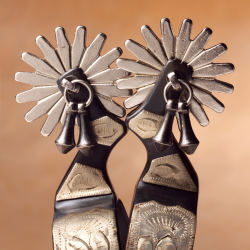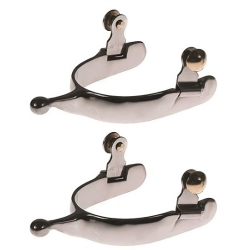If you're an avid horse rider or an equestrian enthusiast, you know the importance of having the right gear and accessories for your equine adventures. One essential item that should not be overlooked is the insulated horse saddlebag.
In this comprehensive guide, we will delve into the world of insulated horse saddlebags, exploring their purpose, benefits, and how to choose the right one for your needs. We will also discuss the importance of insulation, common items stored in these saddlebags, and recommended brands and products to consider.
Additionally, we will provide you with practical tips on how to pack and organize your insulated horse saddlebags, ensuring easy access to your essentials while maintaining proper weight distribution on your horse. We will also touch upon the vital topic of maintaining and cleaning your saddlebags, so they can continue to serve you and your horse for years to come.
Whether you're a trail rider, a competitor, or simply someone who enjoys spending time with horses, this guide will equip you with the knowledge and insights needed to make informed decisions about insulated horse saddlebags. So, let's saddle up and dive into the world of these indispensable accessories!
Understanding the Basics: What Are Insulated Horse Saddlebags?
Insulated horse saddlebags are specially designed bags that attach to the saddle of a horse. They are used to store and transport various items that riders may need during their horseback adventures. These saddlebags are equipped with insulation materials, such as foam or thermal lining, to provide temperature control and protection for the stored items.
The primary purpose of insulated horse saddlebags is to keep the contents safe, secure, and at the desired temperature, regardless of the weather conditions. Whether you're carrying food and drinks for a picnic, medications that require temperature control, or sensitive equipment like cameras or electronics, insulated saddlebags ensure that your items remain in optimal condition throughout your ride.
These saddlebags typically feature multiple compartments and pockets, allowing riders to organize their belongings efficiently. The main compartment is usually insulated, while the outer pockets may provide additional storage space for smaller items like keys, phones, or maps.
Insulated horse saddlebags come in various sizes, shapes, and designs to accommodate different needs and preferences. Some saddlebags are specifically designed for long trail rides, while others may be geared towards competitive riders who require quick access to specific equipment or supplies.
As we explore further in this guide, you will discover the many benefits of using insulated saddlebags and how they can enhance your horseback riding experience. Whether you're planning a day trip or embarking on a multi-day adventure, having insulated horse saddlebags will prove to be a valuable addition to your equestrian gear collection.
Why Use Insulated Horse Saddlebags?
Insulated horse saddlebags offer a range of advantages that make them a valuable accessory for every horse rider. Let's explore some of the key reasons why you should consider using insulated saddlebags:
Importance of Insulation in Horse Saddlebags
Insulation plays a crucial role in maintaining the temperature of the items stored in your saddlebags. Whether you're carrying perishable food, medications, or even sensitive electronics, insulation helps to regulate and control the temperature inside the bag. This is especially important during extreme weather conditions, as insulated saddlebags can keep your items cool in hot weather or prevent them from freezing in cold temperatures.
Benefits of Using Insulated Saddlebags
-
Food and Beverage Preservation: Insulated saddlebags are ideal for storing food and drinks during long rides or overnight trips. The insulation helps to keep food fresh and beverages cool, ensuring that you have nourishment and refreshments readily available.
-
Medication Storage: If you require medications that need to be kept at a specific temperature, insulated saddlebags provide a reliable solution. Whether it's insulin, veterinary medications, or other temperature-sensitive drugs, these bags can help maintain the required temperature for safe storage.
-
Equipment Protection: Insulated saddlebags offer protection for delicate equipment like cameras, lenses, or other electronic devices. The insulation acts as a cushion, safeguarding your gear from potential damage caused by jolts, vibrations, or sudden impacts.
-
Versatility and Convenience: Insulated saddlebags typically come with multiple compartments and pockets, allowing you to organize your belongings efficiently. This makes it easier to access specific items without rummaging through a cluttered bag. Additionally, many saddlebags feature adjustable straps or attachment systems that ensure a secure fit to the saddle, preventing any shifting or discomfort during your ride.
-
Weather Resistance: Insulated saddlebags are often made from durable and weather-resistant materials, such as nylon or polyester. These materials help to protect your belongings from rain, snow, dust, and other external elements. Additionally, some saddlebags come with waterproof covers or built-in rain flaps for added protection during wet weather conditions.
Common Items Stored in Insulated Saddlebags
Insulated saddlebags can accommodate a wide range of items, depending on your specific needs and the duration of your ride. Some common items that riders store in these saddlebags include:
- Water bottles or hydration packs
- Snacks, sandwiches, or packed meals
- Medications (human or veterinary)
- First aid kits and emergency supplies
- Maps, compasses, and navigation tools
- Personal items like wallets, keys, and cell phones
- Camera equipment or binoculars
- Extra clothing layers or rain gear
- Tools or equipment for trail maintenance
By utilizing insulated saddlebags, you can ensure that these essential items are readily accessible, well-protected, and maintained at the appropriate temperature throughout your ride.
In the next section, we will delve deeper into the process of selecting the right insulated horse saddlebags to meet your specific needs and preferences.
Choosing the Right Insulated Horse Saddlebags
When it comes to choosing the right insulated horse saddlebags, there are several factors to consider. These factors will help ensure that you find saddlebags that are not only functional and durable but also suit your individual needs and preferences. Let's explore these factors in detail:
Factors to Consider When Purchasing
-
Size and Capacity: Consider the amount of storage space you require. Think about the duration of your rides and the items you typically carry. Saddlebags come in different sizes, ranging from compact options for shorter rides to larger ones for multi-day trips. Ensure that the saddlebags have sufficient capacity to accommodate your essentials.
-
Insulation Material: Pay attention to the type of insulation used in the saddlebags. Look for materials that offer effective temperature control and insulation properties. Foam or thermal linings are commonly used for insulation and can help maintain the desired temperature of your stored items.
-
Durability: Opt for saddlebags made from durable materials that can withstand the rigors of horseback riding. Heavy-duty nylon or polyester are popular choices for their strength and resistance to wear and tear. Reinforced stitching and sturdy zippers are also important features to look for.
-
Attachment System: Consider how the saddlebags will attach to your saddle. Look for a secure and adjustable attachment system that ensures a snug fit and prevents any shifting or movement during your ride. Common attachment methods include straps, buckles, or Velcro closures.
-
Compartments and Organization: Evaluate the organization features of the saddlebags. Multiple compartments, pockets, and dividers can help you keep your items organized and easily accessible. Consider your specific needs and whether you prefer separate storage areas for different items.
-
Weight Distribution: Ensure that the saddlebags are designed in a way that allows for proper weight distribution on your horse's back. This will help maintain balance and comfort during your ride. Look for saddlebags that distribute weight evenly and do not place excessive pressure on any particular area.
Different Types of Insulated Saddlebags
There are various types of insulated horse saddlebags available on the market, each designed to cater to different riding styles and preferences. Some common types include:
-
Trail Riding Saddlebags: These saddlebags are typically larger in size, offering ample storage space for longer rides. They often feature multiple compartments and pockets for organizing your belongings.
-
Competitive Riding Saddlebags: Designed for riders participating in competitions or events, these saddlebags focus on quick and easy access to specific equipment or supplies. They are often streamlined and lightweight.
-
Overnight or Multi-day Saddlebags: If you plan on embarking on extended rides or overnight trips, consider saddlebags specifically designed for multi-day adventures. These saddlebags may have additional features like detachable compartments or options for attaching sleeping bags or tents.
-
Specialty Saddlebags: Depending on your specific needs, you may find specialty saddlebags designed for specific purposes such as carrying cameras or medical supplies. These saddlebags often offer extra protection and customization options.
Recommended Brands and Products
When it comes to insulated horse saddlebags, there are several reputable brands known for their quality and durability. Some popular brands include:
- Brand A: Known for their wide range of saddlebag options, with a focus on durability and functionality.
- Brand B: Offers saddlebags with innovative design features and customizable options.
- Brand C: Known for their high-quality materials and attention to detail in saddlebag construction.
- Brand D: Specializes in saddlebags designed specifically for competitive riding or endurance events.
Research customer reviews and consider the recommendations of experienced riders to find the best brand and product that aligns with your specific needs and budget.
By taking into account these factors, considering different types of saddlebags, and exploring reputable brands, you can make an informed decision when choosing the right insulated horse saddlebags for your equestrian adventures.
How to Pack and Organize Your Insulated Horse Saddlebags
Packing and organizing your insulated horse saddlebags properly is essential for a smooth and enjoyable ride. By following these tips, you can ensure that your items are easily accessible, well-protected, and efficiently distributed within the saddlebags:
Essential Items to Pack
-
Food and Water: Carry enough food and water to sustain yourself and your horse during the ride. Pack non-perishable snacks, energy bars, or sandwiches. Use leak-proof containers or resealable bags to prevent spills or contamination. Consider a hydration pack or water bottles for easy access to water.
-
First Aid Kit: Include a well-stocked first aid kit with items like bandages, antiseptic ointment, tweezers, and any necessary medications. Pack it in a waterproof bag or container to keep it protected.
-
Navigation Tools: Depending on your ride, bring navigation tools such as maps, compasses, or GPS devices. Keep them in a waterproof case or sleeve to protect them from moisture.
-
Extra Clothing Layers: Depending on the weather conditions, pack extra clothing layers like jackets, rain gear, or hats. Roll them tightly to save space and use compression bags if necessary.
-
Tools and Repair Kit: Carry basic tools and a repair kit for any unexpected equipment or gear issues. Include items like a multi-tool, spare horse shoe nails, hoof pick, and duct tape.
-
Personal Items: Bring essentials like your wallet, cell phone, keys, and identification. Consider using a small waterproof pouch or bag to protect these items from potential damage.
Organizing for Easy Access
-
Utilize Compartments: Take advantage of the compartments and pockets in your saddlebags. Assign specific items to each compartment for easy organization and quick access. For example, keep food items in one compartment, first aid supplies in another, and tools in a separate pocket.
-
Pack Heavier Items First: Place heavier items at the bottom of the saddlebags to maintain proper weight distribution on your horse's back. This helps prevent discomfort or imbalance during the ride.
-
Wrap Fragile Items: If you have fragile items like cameras or electronics, wrap them in soft cloth or bubble wrap to provide extra protection against shocks or vibrations.
-
Consider Waterproofing: Use waterproof bags or plastic zip-lock bags for items that can be damaged by moisture. This includes electronics, documents, or any items that should remain dry.
-
Secure Loose Items: Use elastic bands, Velcro straps, or bungee cords to secure any loose items within the saddlebags. This prevents shifting and potential damage during the ride.
Weight Distribution Tips
-
Balance the Load: Distribute the weight evenly between both sides of the saddlebags to maintain balance. Avoid overloading one side, as it can cause discomfort or affect your horse's gait.
-
Distribute Weight Along the Length: Spread the weight along the length of the saddlebags rather than concentrating it in one area. This helps distribute the load evenly and reduces pressure points on your horse's back.
-
Check for Stability: Before setting off, ensure that the saddlebags are securely attached and properly balanced. Adjust the straps or attachment system as needed to prevent any shifting or movement during the ride.
By packing and organizing your insulated horse saddlebags thoughtfully, you can ensure easy access to your essentials, maintain proper weight distribution, and protect your items throughout your ride.
Maintaining and Cleaning Your Insulated Horse Saddlebags
Maintaining and cleaning your insulated horse saddlebags is crucial to ensure their longevity and optimal performance. Here are some important steps to follow for proper maintenance and cleaning:
Regular Cleaning and Inspection
-
Empty and Shake Out: Remove all items from the saddlebags and shake them out to remove any debris or loose dirt.
-
Wipe Down Exteriors: Use a damp cloth or sponge to wipe down the exteriors of the saddlebags, removing any surface dirt or stains. Avoid using harsh chemicals or abrasive cleaners that could damage the material.
-
Interior Cleaning: Insulated saddlebags often have removable liners or inserts. If possible, remove these liners and clean them separately according to the manufacturer's instructions. For non-removable liners, wipe them down with a damp cloth or sponge.
-
Dry Thoroughly: After cleaning, allow the saddlebags and liners to air dry completely before reassembling. Avoid direct sunlight or heat sources, as they can cause damage or shrinkage to the material.
-
Inspect for Damage: Regularly inspect your saddlebags for any signs of wear, tear, or damage. Check the stitching, zippers, and straps for any issues that may require repair or replacement. Addressing any damage promptly will help prolong the lifespan of your saddlebags.
Proper Storage
-
Clean and Dry: Before storing your saddlebags, ensure they are clean and completely dry. Any moisture left behind can lead to mold or mildew growth.
-
Stuff with Paper: To help maintain the shape of the saddlebags during storage, stuff them with crumpled newspaper or tissue paper. This will prevent them from losing their structure.
-
Store in a Dry Location: Store your saddlebags in a cool, dry place away from direct sunlight or extreme temperatures. Avoid storing them in damp or humid areas to prevent mold or mildew growth.
-
Protect from Dust: Use a dust cover or place the saddlebags in a breathable storage bag to protect them from dust and dirt accumulation.
Repairing Damaged Saddlebags
-
Patching Holes: If you notice any small holes or tears in your saddlebags, you can patch them using adhesive patches specifically designed for the material of your saddlebags. Follow the manufacturer's instructions for proper application.
-
Reinforcing Stitching: If the stitching on your saddlebags becomes loose or starts to unravel, reinforce it with additional stitching or consult a professional for repair.
-
Zipper Maintenance: Keep zippers functioning smoothly by applying a small amount of zipper lubricant or wax. This will prevent them from getting stuck or breaking.
-
Professional Repair: For extensive damage or repairs that you are not comfortable handling yourself, consider taking your saddlebags to a professional repair shop or contacting the manufacturer for assistance.
By following these maintenance and cleaning practices, you can ensure that your insulated horse saddlebags remain in good condition, prolonging their lifespan and ensuring that they continue to serve you well during your horseback adventures.












































